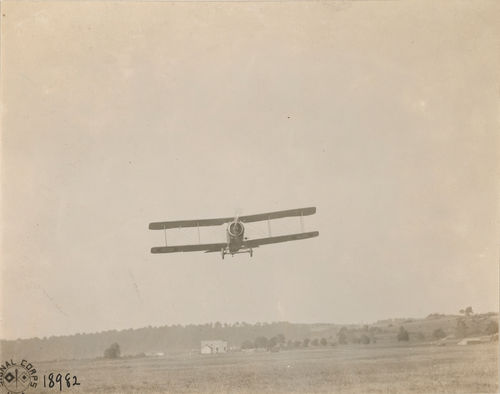Salmson 2a2
The Salmson 2a2 was the workhorse of the 12th Aero Squadron. Praised for its speed, ruggedness, and agility, the Salmson was considered to be the best observation aircraft of the war. It is no surprise the Salmson was much loved by crews of the 12th Aero Squadron. Once the Salmsons arrived, the 12th gladly discarded their worn out A.R.s and flew the mighty Salmson until the end of the War.
Roughly 3,200 Salmson 2a2s were built yet there are no known original intact aircraft in existence today. Fortunately, the Gifu-Kakamigahara Air and Space Museum and the l'Envol des Pionniers in France have full scale replicas on display.
Image courtesey of:bradsmodels.squarespace.com
From its inception, the Salmson was built for reconnaissance work. Powered by the water cooled 260 horse power Canton-Unné 9za radial engine, the Salmson could operate up to about 20,000 feet and cruise at about 118 mph or 101 nm/hr while still retaining its handling characteristics. Coupled with a self-sealing fuel tank, the Salmson proved sturdy and more than capable of withstanding the rigors of combat.
The pilot was equipped with a single forward facing nose mounted Vickers .303 machine gun and the Observer possessed twin Lewis .303 machine-guns mounted on a rotating Scarf Ring. The Vickers used an ammunition belt with disintegrating links. As the gun fired, the links from the used portion of the belt separated and were ejected with spent bullet casings out the left side of the aircraft. Two Lewis guns were mounted on a Scarf Ring behind the pilot. Observers were typically outfitted with 97 round magazines and were interchangeable in flight. Though less agile, the Salmson was well armed and proved a dangerous target to even the best German fighters.
The Salmson could be equipped with a variety of cameras including the floor mounted semi-automatic De Ram Camera. It also carried a wireless telegraph transmitter for artillery adjustment missions. Aircraft equipped with wireless sets were marked "T.S.F" on the fuselage, an abbreviation for "télégraphie sans fil," or "wireless telegraphy" translated from French to English.
The mighty Salmson possessed several interesting features to include an all moving tail and elevators, a pitch trim wheel, reverse tapering ailerons on the upper and lower wings, Venetian blind shutters to control engine cooling and floor blinds allowing the pilot to view the ground beneath him.
Vickers .303 Machine Gun
Lewis Machine Gun
Image courtesey of:bradsmodels.squarespace.com
10


_edited.jpg)






























